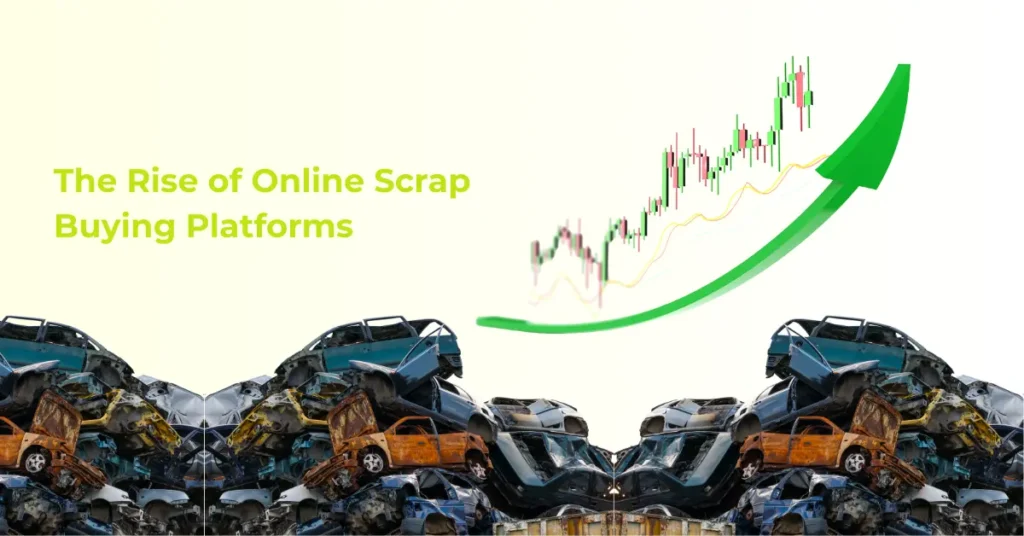We live in a world that runs on gadgets. Every few months, a new smartphone launches, a sleeker TV hits the market, or our laptop starts to feel “slow.” Naturally, we upgrade. But here’s the thing every upgrade leaves behind e-waste: the old electronics we no longer use. And these discarded devices are piling up faster than we can manage.
What Exactly Is E-Waste?
E-waste (short for electronic waste) includes any discarded electrical or electronic devices from phones, laptops, and chargers to refrigerators and LED bulbs. If it plugs in or runs on a battery and you throw it away, it’s e-waste.
The UN’s Global E-waste Monitor reported that the world generated more than 62 million tonnes of e-waste in 2022, and this is projected to hit 80 million tonnes by 2030. Shockingly, only 17% of that waste was properly collected and recycled.
Think about how often we replace our gadgets. Every time you toss an old smartphone in a drawer or dump a broken hair dryer in the bin, it adds to this invisible mountain.

Types of E-Waste :
E-waste isn’t all the same, it’s divided into categories based on the kind of product and materials.
-
Large Household Appliances: Items like washing machines, refrigerators, air conditioners, and microwaves. When these are dumped improperly, the gases from cooling agents like CFCs can damage the ozone layer. Example: Many urban households now replace old refrigerators that still work fine just because newer, energy-efficient models are trendy. Those older units often end up in scrap yards with their parts rusting in open air.
-
Small Electronic Devices: Things like mobile phones, chargers, headphones, cameras, or toys with circuit boards. Example: In India alone, over 500 million mobile phones are replaced every year. Most end up forgotten in drawers or sold to informal scrap dealers who dismantle them unsafely for metal.
-
IT and Telecommunication Equipment: Includes computers, monitors, printers, routers, and office electronics. Example: When companies upgrade to new laptops or servers, they discard hundreds of working systems. While some donate them, many go to informal recyclers where workers handle them without gloves or masks.
-
Consumer Electronics: TVs, speakers, radios, and DVD players.
Example: The shift from bulky CRT TVs to flat screens created millions of tonnes of waste glass and lead-filled components still lying unmanaged in many rural dumpsites. -
Lighting Equipment: LED bulbs, fluorescent tubes, and lamps contain mercury and other hazardous substances. Example: People often throw fused CFL bulbs in household bins without realizing the mercury inside can contaminate soil and groundwater.

Sources of E-Waste
E-waste comes from everywhere: homes, offices, schools, and industries.
-
Households: Think of all the old chargers, dead remote batteries, and broken mixers lying around. Every home contributes more than we realize.
-
Corporate Offices: When companies upgrade systems, hundreds of monitors, CPUs, and cables are discarded in one go.
-
Educational Institutions: Schools and colleges frequently replace projectors, computers, and lab instruments.
-
Telecom Sector: When 4G rolled out, massive amounts of 3G hardware were scrapped towers, routers, and modems.
A relatable example: when people shifted from 3G to 4G and now to 5G phones, crores of devices were dumped within just a few years. Each one of those phones contains lithium, gold, copper, and lead; materials valuable but dangerous when left to rot.
How E-Waste Affects the Environment
E-waste doesn’t just clutter landfills, it poisons our environment as well.
-
Soil Contamination: When dumped electronics rust, toxic elements like cadmium and lead leak into the soil. Example: In Seelampur, Delhi – one of India’s largest e-waste hubs; the soil around scrap markets is so polluted that vegetables grown nearby are unsafe to eat.
-
Water Pollution: Burning or dumping e-waste near rivers contaminates water sources. Example: In Ghana’s Agbogbloshie dump yard, toxic runoff from dismantled electronics flows into nearby streams, killing aquatic life and harming local communities.
-
Air Pollution: Many informal recyclers burn wires and circuit boards to extract copper, releasing black smoke filled with harmful gases. Example: In Moradabad, Uttar Pradesh, workers often burn old phone parts in open fields, exposing themselves and the air to toxic fumes.
How to Segregate and Manage E-Waste
Managing e-waste begins with segregation & separating it from regular waste.
-
Keep E-Waste Separate: Don’t throw broken electronics in dustbins. Have a dedicated box or bag at home for old chargers, phones, or bulbs.
-
Authorized Collection Centers: Use registered e-waste collection points. Most cities have them now. For example, Croma, Apple, and HP stores accept old devices for recycling.
-
Repair, Reuse, and Donate: Before discarding, check if the product can be repaired. Many NGOs refurbish old computers for underprivileged students.
Example: Organizations like Karo Sambhav and Namo E-Waste in India collect and responsibly recycle tons of electronic waste every year. -
Exchange Programs: Most smartphone brands offer trade-in schemes. For instance, Apple’s “Trade In” or Samsung’s “Smart Upgrade” programs ensure your old phones are safely recycled.
-
Community E-Waste Drives: Many residential societies now organize quarterly e-waste drives. Participating in such initiatives helps ensure responsible disposal at scale.
Protecting the Environment: One Device at a Time
Protecting the planet from e-waste starts with mindful consumption. We don’t need to buy every new gadget the moment it hits the market. Extending the life of a device by just one year can significantly reduce overall waste. Here’s what helps:
-
Think before upgrading: Is your old phone really outdated, or just not trendy anymore?
-
Recycle responsibly: Always choose certified recyclers.
-
Educate others: Talk to family and friends about safe disposal as awareness multiplies action.
A simple act like dropping your old battery at an authorized collection point instead of tossing it in the trash prevents toxic metals from entering groundwater. That’s how real change begins: one conscious choice at a time.
E-waste is not just about discarded gadgets. It’s a reflection of how we consume, upgrade, and dispose of technology. The question isn’t whether we should change, it’s how soon we do it.
Let’s make sure our love for innovation doesn’t cost the planet its health.

